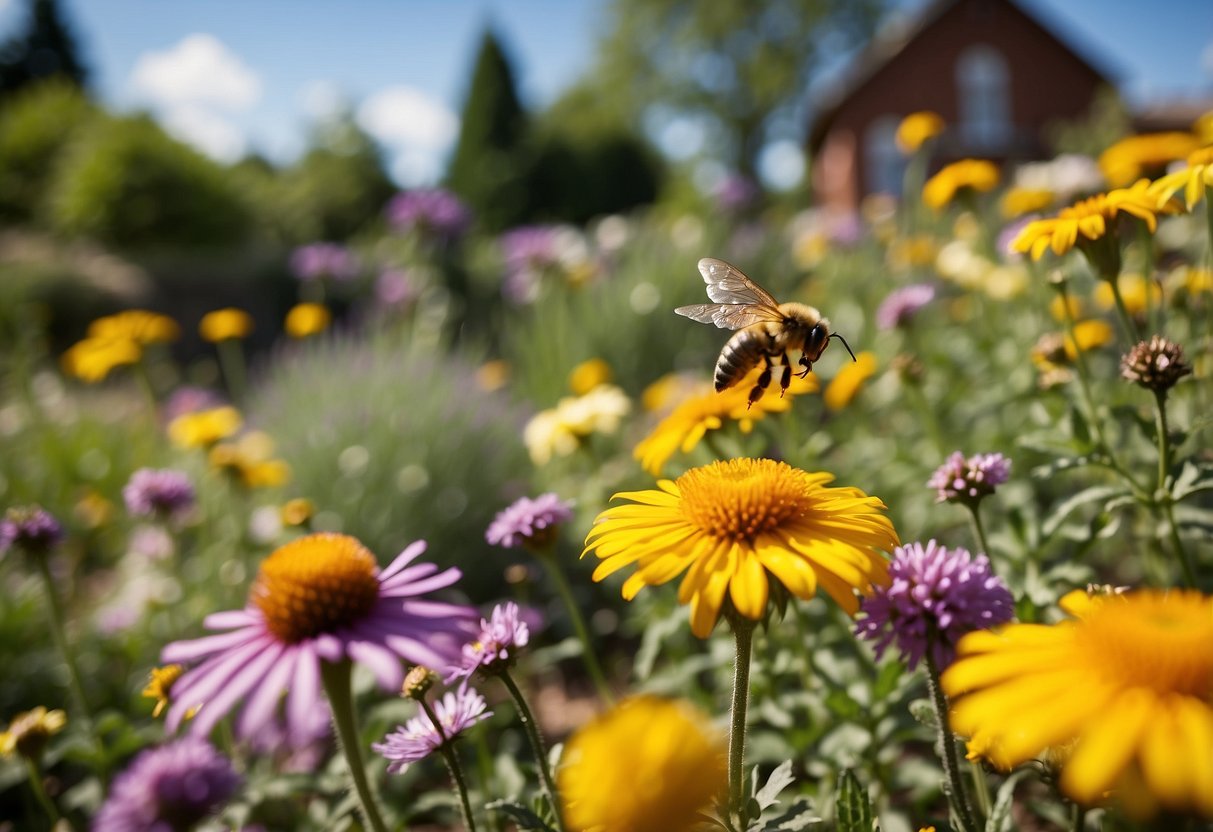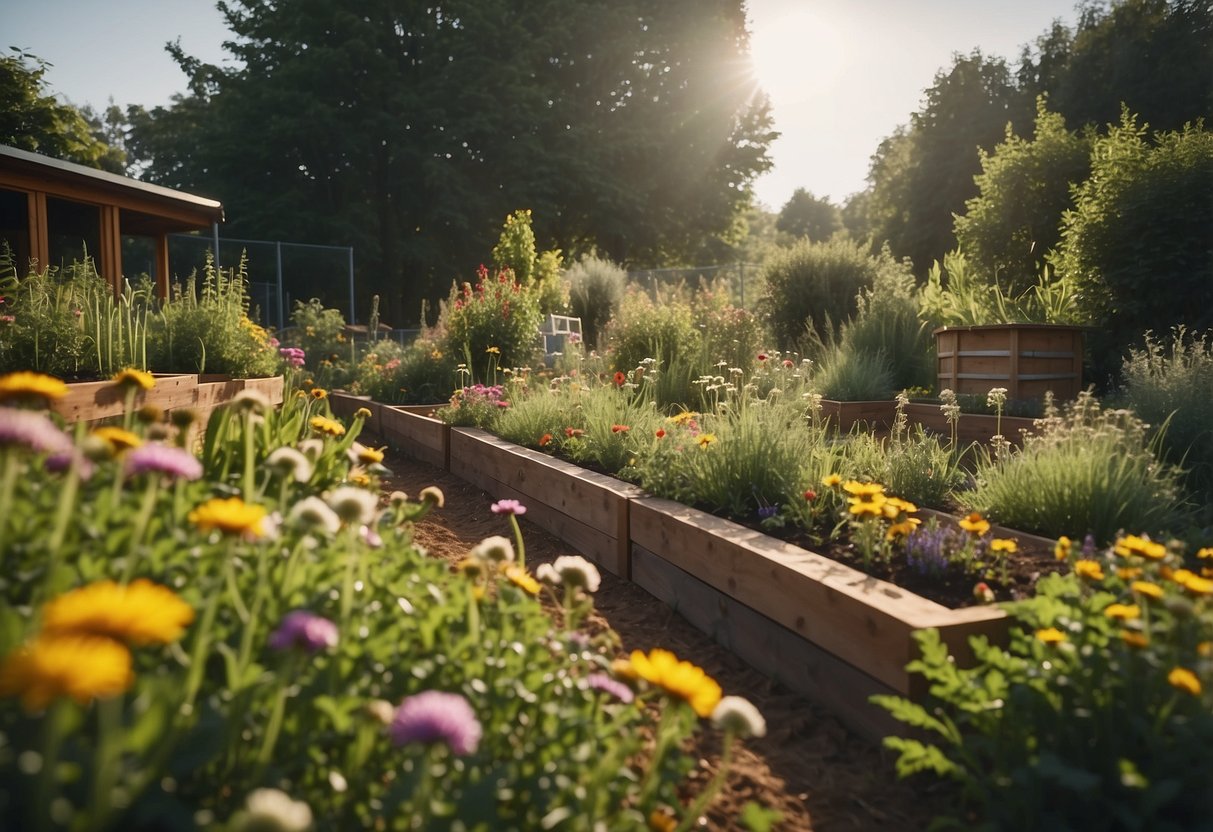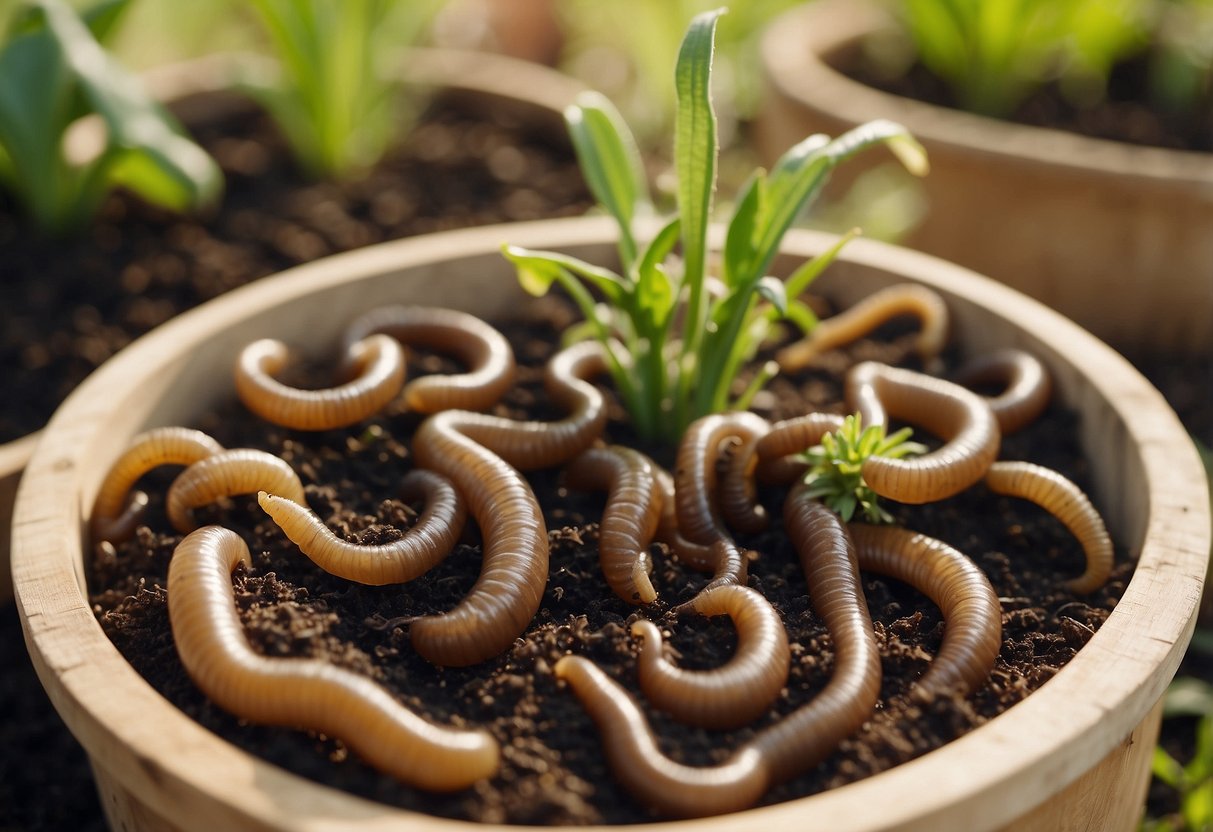Eco School Garden Ideas: Fun and Sustainable Projects for Kids
Creating an eco-friendly school garden is a fun and educational way to engage students with nature. You can introduce kids to sustainable practices and teach them about the environment through hands-on activities like planting and composting. This not only helps the planet but also enriches their learning experience.

Why build an eco-friendly school garden? It provides a unique outdoor classroom where students can learn about biology, ecology, and environmental stewardship. Plus, it fosters a sense of community and responsibility as students work together to care for their garden.
1) Raised Bed Gardens

Raised bed gardens are a great way to grow plants at your school. They offer better soil drainage and are easier to access. You can make them with wood, stone, or even used tires.
Consider planting vegetables like tomatoes, peppers, and lettuce. They grow well in these types of gardens.
You can also add some flowers like marigolds and petunias for color.
Raised beds can be as simple or fancy as you want. They let you control the soil quality better and make gardening more fun for students. Learn more about designing raised bed gardens.
2) Compost Bins

Compost bins are a great addition to your school garden. They help reduce waste and create nutrient-rich soil for plants.
You can make compost bins from simple materials like plastic containers or wooden pallets. Try making a worm bin using 5-gallon buckets, which is perfect for small spaces.
Get students involved by having them decorate the bins. This makes composting fun and encourages them to take part. Adding pictures or labels can also help them learn what items can be composted.
For more ideas on building compost bins, you can check out DIY Compost Bin Plans.
3) Rainwater Harvesting Systems

Using a rainwater harvesting system in your school garden is a great way to save water. You can collect rainwater from the roof using gutters and direct it into a storage tank. This water can be used to irrigate the garden.
A simple method is installing a rain barrel. This can be as easy as attaching it to your house’s drain pipes.
If you’re more hands-on, consider building a water catchment system using materials you already have. Check out this guide for more DIY ideas.
4) Pollinator Gardens

Pollinator gardens are a great way to bring nature closer to your school. Plants that attract bees, butterflies, and other pollinators help the environment and enhance your garden’s beauty.
Choose native plants to attract local pollinators. For example, Blue Vervain is an excellent wildflower for the garden. It attracts butterflies and bees with its purple flowers in the summer.
Allow leaves to stay on top of the soil during winter and spring. This creates a natural layer that supports the ecosystem, providing a habitat for many pollinators.
Regularly water and weed your garden to keep it healthy. Patience is important; it may take a couple of seasons for certain plants like milkweed to start flowering.
Creating a pollinator garden at your school can be an educational and enjoyable project for students.
5) Herb Spirals

Herb spirals are a fun and efficient way to grow herbs in your school garden. They save space and create different growing conditions within the same bed. You can use stones or wood to build the spiral structure.
The design allows for various herbs to thrive in different spots. For a detailed guide on building one, check out How to Build a Spiral Herb Garden. Implementing an herb spiral can make your eco-garden more productive and attractive.
6) Native Plantings

Using native plants in your school garden can make a big difference. These plants are adapted to local conditions and require less water and care.
Native plants also support local wildlife. Birds, bees, and butterflies rely on these plants for food and shelter.
You can find design ideas for native plant gardens at organizations like the California Native Plant Society and Grow Native!.
7) Recycled Material Pathways

Creating paths with recycled materials is both fun and eco-friendly. You can use old bricks, broken tiles, or even wine bottles. These materials add a rustic touch to your garden and help reduce waste.
Why not try a puzzle brick garden path? It’s simple to lay out and looks unique. For a whimsical approach, consider using wood slices. They offer a natural feel and can be sourced from fallen trees or old logs.
For a colorful twist, think about using glass bottles. They can be buried neck down to form an interesting border along your path.
8) Sensory Gardens

Sensory gardens are special spaces designed to engage all five senses: sight, smell, sound, touch, and taste. They are a great addition to any eco school garden.
You can use plants with bold colors and interesting textures. For example, sunflowers and love-in-a-mist can add bright pops of color. Adding a chameleon plant can bring unique scents with its lemon-scented leaves.
Elements like wind chimes or water features can create soothing sounds. Consider adding edible plants such as herbs and berries to stimulate taste. This type of garden provides a rich, interactive experience for students.
9) DIY Worm Farms

Creating a worm farm is a fun and eco-friendly project for your school garden. It helps turn organic waste into rich compost.
You only need a few materials such as bins, bedding, and worms. First, drill holes in the bottom and sides of the bin for air circulation.
Fill the bin with damp bedding like shredded newspaper. Add your worms and some food scraps, then cover it with a lid. You can find more detailed instructions on how to make a worm farm.
This project not only reduces waste but also enhances your garden’s soil quality. Your students will love watching worms turn scraps into compost!
For more guidance and fun activities with worms, check out these ideas.
10) Edible Walls

You can make your school garden exciting with edible walls. These vertical gardens let you grow herbs, vegetables, and fruits even if you have limited space.
Your students will love seeing tomatoes, strawberries, or even spinach growing up the walls. Set up simple structures using materials like PVC pipes or rain gutters.
It’s a great way to teach about sustainability and healthy eating. You can also learn more about creating edible walls by visiting this resource.
Benefits of an Eco School Garden

Eco school gardens can provide numerous advantages for students. They help build environmental awareness, support academic success, and foster healthier eating habits.
Promotes Environmental Awareness
Creating an eco school garden encourages students to learn about the environment actively. You’ll find that children gain firsthand experience with the life cycles of plants and insects. This knowledge helps them appreciate the natural world more deeply.
A garden also teaches children about sustainability. They learn how composting works, the importance of water conservation, and the benefits of using organic methods. These experiences can inspire a lifelong commitment to protecting the environment.
In addition, eco gardens often feature native plants, which can attract local wildlife and promote biodiversity. This interaction can spark curiosity and a sense of responsibility toward preserving natural habitats.
Enhances Student Learning
Studies show that students who participate in school gardens tend to perform better academically. Being in a garden allows you to apply science, math, and even art concepts in a practical setting. For example, measuring plant growth can involve both math skills and scientific observation.
Gardening can also boost creativity and problem-solving abilities. When you plan, plant, and tend to a garden, you learn to think critically and adapt to challenges like pests or weather changes.
Moreover, outdoor learning environments often improve concentration and reduce stress. This can lead to better classroom behavior and higher engagement with lessons. Simply put, a garden can transform traditional learning into a dynamic, hands-on experience.
Encourages Healthy Eating
One of the standout benefits of an eco school garden is its impact on students’ eating habits. Growing fruits and vegetables can make kids more willing to try and enjoy these foods.
When you are involved in the planting and harvesting process, you develop a stronger connection to your food. This often results in increased openness to and intake of fresh produce, as noted by the Sustainable Food Center.
Additionally, gardens can serve as a practical setting for nutrition education. Students can learn about the different vitamins and minerals in various plants and how these nutrients benefit their bodies. This educational aspect supports forming healthy eating habits that can last a lifetime.
Planning Your Eco School Garden

Creating an eco-friendly school garden involves careful planning to ensure it provides educational value while being sustainable. Key factors include choosing an appropriate location, selecting eco-friendly materials, and involving students in the garden’s design.
Choosing the Right Location
The location of your garden plays a vital role in its success. Look for an area with plenty of sunlight. Most plants need at least 6-8 hours of sunlight each day. Also, make sure the soil is healthy and can drain well. If the soil isn’t great, you might consider raised beds.
Accessibility is crucial. Ensure the garden is easily accessible for all students, including those with disabilities. This might mean having wide paths or considering the height of the beds. Proximity to a water source is another important factor. Having a nearby tap will make watering the garden much easier.
Additionally, choose a spot that is safe from heavy foot traffic and away from play areas. This helps protect the plants from being trampled and keeps students safe.
Selecting Eco-Friendly Materials
Opt for sustainable materials when building your garden. For raised beds, consider using reclaimed wood instead of new timber. Compost and organic soil are excellent choices for enriching the garden beds. Avoid using chemicals; choose natural fertilizers and pest control methods.
Rain barrels can be used to collect and store rainwater, which can then be used to water the plants. This not only conserves water but also teaches students about sustainable practices. Mulch helps to retain moisture in the soil and suppress weeds.
For pathways, materials like bark chips or gravel are environmentally friendly options. They provide good drainage and prevent soil erosion. Also, consider using recycled plastic for garden markers and signs. This not only helps the environment but also introduces students to the concept of recycling.
Involving Students in the Design
Getting students involved in designing the garden makes the project more educational and engaging. Start by discussing what kinds of plants they would like to grow. This can include a mix of vegetables, fruits, and flowers, providing a diverse ecosystem for learning.
Organize design workshops where students can share their ideas and preferences. These workshops can include drawing garden layouts, selecting plant types, and deciding on features like bird boxes or compost bins. Encourage students to think about the garden’s environmental impact and ways to minimize it.
Let students take on roles such as garden planners, builders, and caretakers. This not only makes them feel more invested but also teaches them valuable skills. You can also integrate the garden design into science and art classes, making the project cross-curricular.
Collaborate with the local community or garden experts if possible. This can provide additional resources and knowledge to help in creating the garden. Having students interact with experienced gardeners can also enhance their learning experience.
Maintaining Your Eco School Garden

Caring for your eco school garden involves sustainable watering techniques, organic pest control, and utilizing composting. These practices keep the garden healthy and teach students valuable lessons.
Sustainable Watering Techniques
Sustainable watering is crucial for your garden’s health and the environment. Drip irrigation systems are efficient as they deliver water directly to the plant roots, minimizing evaporation.
Another method is rainwater harvesting. Install rain barrels to collect rainwater from the school’s roof. This water can be used for watering plants, ensuring you use less treated water and reduce your water bill.
Mulching is also beneficial. Apply a layer of mulch around plants to retain soil moisture, suppress weeds, and keep the soil temperature stable.
Organic Pest Control
Organic pest control helps maintain a healthy garden without harmful chemicals. Companion planting is an effective strategy. For instance, planting marigolds next to tomatoes can repel pests like nematodes.
Introduce natural predators such as ladybugs and predatory wasps to your garden. These insects help control aphid populations and other harmful pests naturally.
Using neem oil and other organic sprays can also deter pests. These sprays are safe for plants and the environment. Mixing water with dish soap and spraying it on plants can keep pests like aphids in check without chemicals.
Utilizing Composting
Composting turns kitchen scraps and garden waste into rich, natural fertilizer. Set up a compost bin in a convenient location in the garden. You can build one from wood, wire mesh, or sturdy plastic.
Teach students to compost by adding a mix of green materials (like fruit scraps and grass clippings) and brown materials (like dry leaves and paper). Turn the compost regularly to aerate it and speed up the decomposition process.
Using compost in your garden enriches the soil with essential nutrients, improves soil structure, and promotes healthy plant growth. This practice also reduces waste and demonstrates sustainability to the students.
By focusing on these methods, your eco school garden can thrive and educate students about environmental responsibility.







